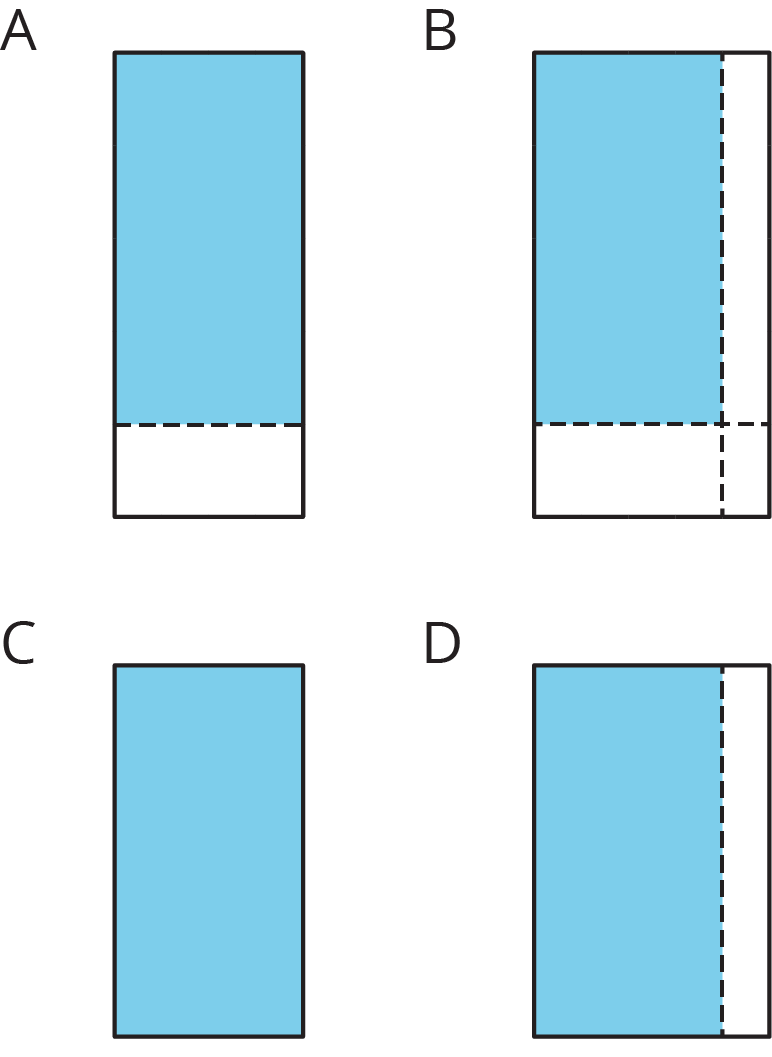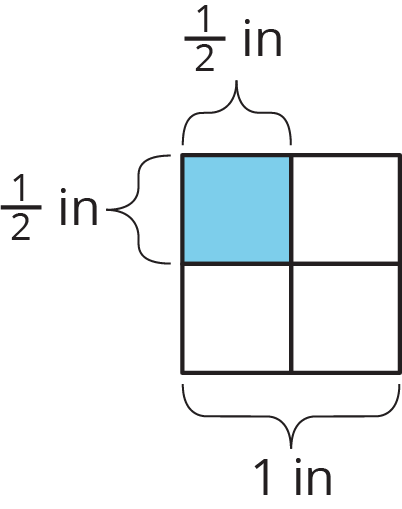If a rectangle has side lengths a units and b units, the area is a \boldcdot b square units. For example, if we have a rectangle with \frac12-inch side lengths, its area is \frac12 \boldcdot \frac12 or \frac14 square inches.
This means that if we know the area and one side length of a rectangle, we can divide to find the other side length.
If one side length of a rectangle is 10\frac12 in and its area is 89\frac14 in2, we can write this equation to show their relationship: \frac12 \boldcdot {?} =89\frac14
Then, we can find the other side length, in inches, using division: 89\frac14 \div 10\frac12 = {?}




